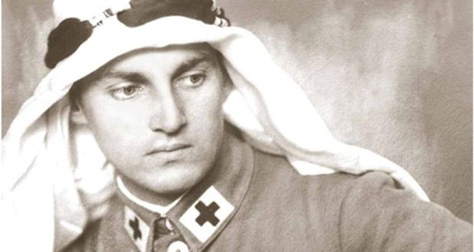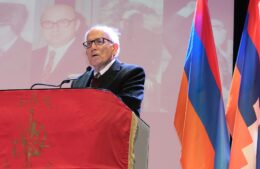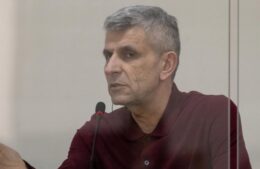Armin Wegner, the German who stood up to genocide of both Armenians and Jews
- (0)
Armin Wegner, the German who stood up to genocide of both Armenians and Jews –

Author Martine Madden salutes a German soldier who risked his life to record the Armenian genocide and again to defend the Jews against the Nazis
The Irish Times – On a sunny Sunday afternoon recently, I sat in Taney church, Dundrum, as Ireland’s small Armenian community commemorated the 100th anniversary of the Armenian Genocide. Like many Armenians around the world, they had come together with family and friends to remember the million and a half Armenians killed in Turkey between 1915 and 1923. Eight other religious communities attended the service, which included a Greek Orthodox priest, a representative of the Chief Rabbi, an Anglican bishop, a Methodist minister and a Roman Catholic archbishop. Several of these clerics took to the pulpit and gave well-researched and sometimes moving accounts of what had happened to Armenian men, women and children in 1915.
My interest in the Armenian Genocide began in the late 1980s when I lived in Al-Ain, an oasis town in the emirate of Abu Dhabi. Two Lebanese-Armenian colleagues told me about the Armenian Genocide, and I remember that I offered my sympathies and quickly forgot about it. Writing about the Middle East some 16 years later, the conversation came back to me and I decided to find out more online. The first website I looked at had an eye-catching photograph of a young soldier in the uniform of the German army, and wearing an Arabic ghutra and egal on his head.
Lawrence of Arabia instantly came to mind, or more likely Peter O’Toole’s version of him in the eponymous film, but this soldier’s name was Armin Wegner and he came from Wuppertal in Westphalia. In the winter of 1914 he enlisted as a medic in the German Army, and by the time he came to Turkey the following year he had already been decorated with the Iron Cross for assisting the wounded under fire. Wegner was a keen photographer and brought his camera to the Ottoman Empire, along with a determination to disobey orders prohibiting him from photographing the death marches and torture of Turkey’s Armenians. Over the course of a year he took hundreds of photographs and smuggled the plates out of the country with soldiers returning to Germany or with diplomats travelling to mainland Europe. In December 1916 he was arrested and recalled to Germany.


















